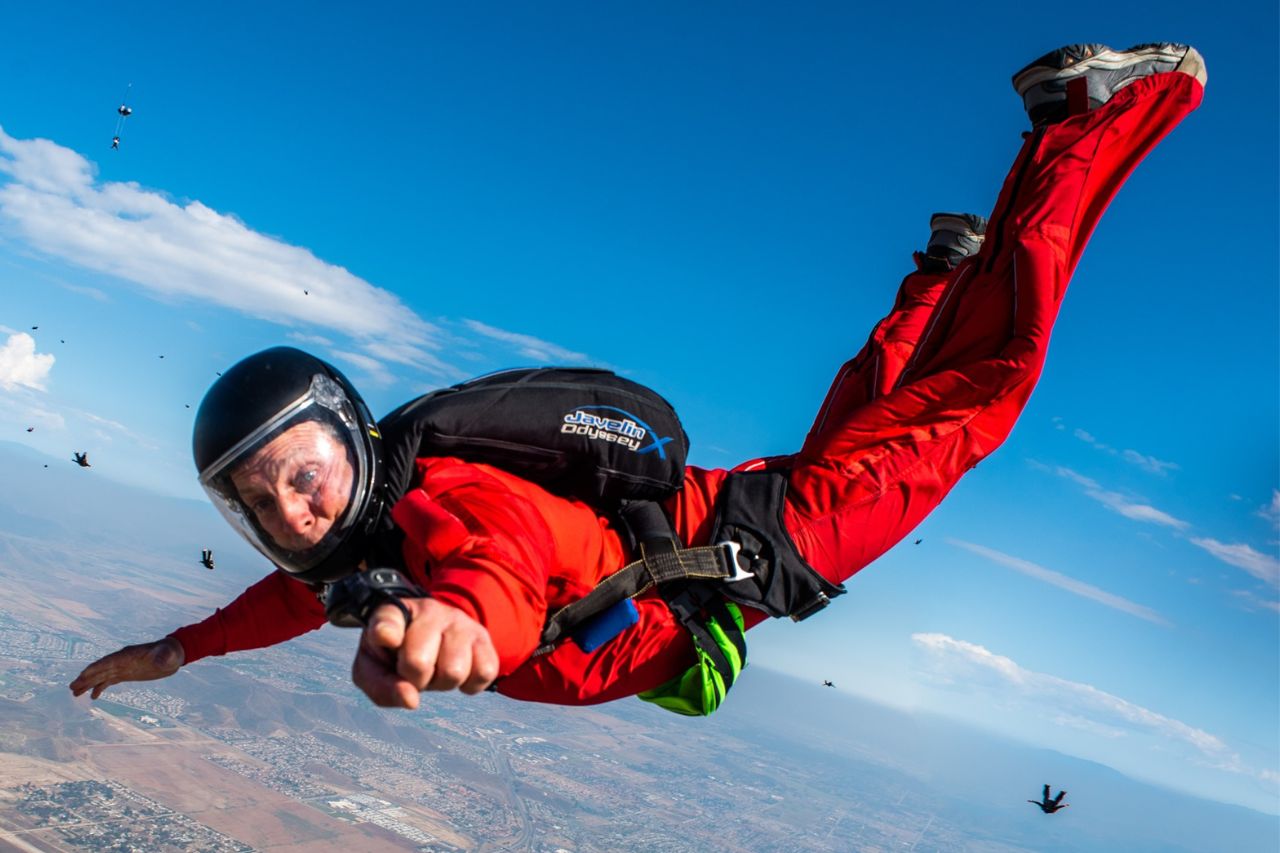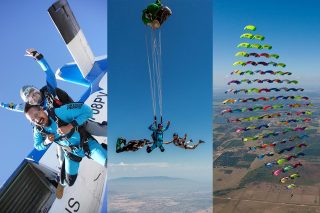SO YOU THINK YOU’RE A BADASS?
Canopy Piloting
Posted by: Dan Brodsky-Chenfeld
9 years ago

How well do you know your emergency procedures?
I’m asking the question because it has become a big issue in the sport. Most skydivers perform their Emergency Procedures (EPs) correctly if asked to demonstrate them. Most can write down the correct answer if taking a written test. But have you trained them to the point of muscle memory? Are the perfect EPs an instinctive response to recognizing a malfunction? If faced with a high pressure, physically strenuous, time sensitive situation are you ready to execute your EPs perfectly and without hesitation? Unfortunately, the honest answer to these questions is too often ‘no’.
Far too many people do not know their emergency procedures anywhere near as well as they need to. As the DZ Manager of one of the world’s largest drop zones, any time I see someone pull too low, or have an AAD fire, I always sit them down and speak to them. Together we try to figure out how they got down there so we can be sure they know what to do differently to be certain it never happens again.
One beautiful, busy day at Skydive Perris we had two AAD fires within an hour of each other. One of the individuals had about 100 jumps and initiated deployment at 4,000 feet. He had a slow speed malfunction, cut away at a high enough altitude but didn’t pull his reserve before his AAD fired. The other had about 400 jumps, started his deployment at 3000’, had a pilot chute in tow, cut away and went for his reserve but not before his AAD beat him to it.
Since both of them had initiated deployment plenty high there was no reason they should have ended up still in freefall so dangerously low. I asked them to demonstrate their emergency procedures for me. They both did. Then I asked them to talk me through the malfunction, their thought processes and show me what they did. Neither of them executed their emergency procedures correctly! They both did something different in the air than the intended emergency procedures they had just shown me! One of them ‘reached’ before he ‘looked’. The other reached with one hand when his plan was to have both hands on both handles.
How is that possible? Skydiving equipment has advanced so much. The emergency procedures we have to do when faced with a malfunction are simple and easy to execute. Way too many fatalities – and more close calls than we can even count – happen because we don’t perform these procedures correctly within the time we have.
These three simple ideas could save your life:
#1 Practice your EPs
Emergency procedures are not practiced enough. I’ve asked many people how often they practice their EPs. The most common answer I hear is “I practice them before each jump.” That sounds like it should be plenty but the fact is, it’s not. Based on that, the jumper with 100 jumps had practiced EPs a total of 100 times. That is not nearly enough to develop the instinctive muscle memory you will need to save your life in the few seconds you have.
There are a few different ways to execute emergency procedures. Each one of them will work as long as you perform it correctly and immediately. None of them take more than five seconds. In a minute you could practice your EPs 12 times. Since your life depends on it, why not take five minutes each day and go through your EPs 60 times. We dirtdive a jump for 15 minutes but usually don’t practice saving our lives for even 5 seconds
You want to be a Badass?
– Dan BC
Be a badass at performing your EPs.
Do your EPs ten times a day for 30 seconds, or five times a day each for a minute. But somewhere in your day find five minutes you can dedicate to practicing EPs (every day, not just jumping days) and you will have rehearsed them to the point that they are totally automatic. You’ll see a malfunction and will instinctively perform the perfect procedures without hesitation.
#2 Stay one step ahead
We are too often surprised when our parachutes don’t work correctly and take too long to make the decision to cut away. Stay one step ahead. **Expect** your parachute to malfunction every jump. Be pleasantly surprised when it doesn’t. If you have any doubt at all about whether your parachute is good or not, it’s not. A good parachute doesn’t give you any doubt.
Don’t wait until you are faced with a stressful malfunction situation to decide what you are going to do. **Decide right now that if you aren’t 100% sure you have a good canopy over your head you will cut away without hesitation.**
#3 Pull at a safe altitude
If you don’t have enough altitude even well executed EPs won’t save you. USPA’s minimum deployment altitude is 2,500 feet. To deploy by 2,500 feet you need to be waving off no lower than 3000 feet. If you are lower you may not have the time you’ll need.
These three simple ideas could save your life. They’ve saved mine on more than 20 malfunctions. Please consider them and share them

You May Be Interested In:

Unique California Experience Gifts for the Holidays
1 month ago by Skydive Perris

Skydiving Patches You Can Collect at Skydive Perris
3 months ago by Skydive Perris

Famous People Who’ve Jumped at Skydive Perris
4 months ago by Skydive Perris

The Ultimate Family Hidden Gem in SoCal
6 months ago by Skydive Perris


